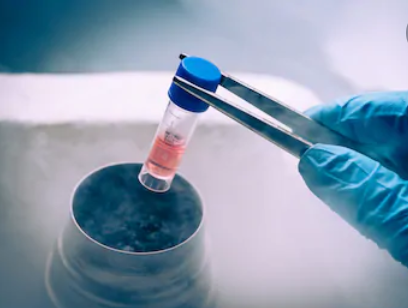Autophagy is a degradation pathway that delivers cytoplasmic materials to lysosomes via double-membraned vesicles designated autophagosomes. Cytoplasmic constituents are sequestered into autophagosomes, which subsequently fuse with lysosomes, where the cargo is degraded. Autophagy is a crucial mechanism involved in many aspects of cell function, including cellular metabolism and energy balance, and alterations in autophagy have been linked to various human pathological processes. Thus, methods that accurately measure autophagic activity are necessary. Creative Bioarray provides customers with multiple options to detect the LC3 protein.

LC3 is a homolog of the yeast ATG8 (Aut7/Apg8) gene in mammalian cells. It is located on the surface of pro-autophagic vesicles and autophagic vesicles and participates in the formation of autophagosomes. In mammalian cells, LC3 is divided into three subtypes: LC3A, LC3B, and LC3C. Each subtype is divided into type I and type II, of which only LC3B is related to autophagy. Generally, the detection of LC3 protein refers to the detection of LC3B. Normally, the LC3 synthesized in the cell is processed to become cytoplasmic soluble type I LC3, which routinely expresses the LC3 protein. During autophagy, type I LC3 is modified by ubiquitin-like processing and combined with phosphatidylethanolamine on the surface of the autophagy membrane to form type II LC3 and accumulate on the autophagosome membrane. Its content is proportional to the number of autophagic vesicles. Therefore, LC3-II can reflect autophagy activity.
LC3 is one of the key landmark molecules for detecting autophagy. Creative Bioarray provides several approaches to detect LC3, including observation by fluorescence microscope, western blot analysis, and flow cytometry. Our services include but are not limited to:
LC3 Western Blotting Service
In the process of autophagy, LC3-I in the cytosol is lipidated to become LC3-II and then moves to the autophagosome membrane. SDS-PAGE electrophoresis can separate LC3-II and LC3-I. Using Western blotting to detect the ratio of LC3-I/LC3-II or the change of LC3-II content can indirectly determine whether autophagy has occurred. It is generally believed that autophagy exists when the ratio of LC3I/LC3-II is less than one.LC3-II can gradually degrade as the autophagic vesicle matures. Therefore, the results of immunoblotting may be different at different stages of autophagy.
Advantages
LC3 Immunofluorescence Detection Service
Normally, LC3 is evenly distributed in the cytoplasm. During autophagy, LC3 accumulates on the autophagosome membrane. We can use a specific antibody to bind to LC3, and observe the site of fluorescence under a fluorescence microscope to determine whether autophagy has occurred. Autophagy cells show bright spots or bubble-like structures under a fluorescence microscope.
Advantages
GFP-LC3 Method Detection Service
This method requires the transfection of the plasmid encoding green fluorescent protein (GFP) and LC3 into the cells. During autophagy, the GFP-LC3 fusion fluorescent protein accumulates on the autophagic vesicle membrane and presents several punctate or bubble-like specific highlights under a fluorescence microscope. Cells with bright spots can be considered to have autophagic vesicles. Autophagy can be quantified by calculating the average number of autophagic vesicles produced in a single cell.
Advantages
Although LC3 detection is very common, errors may sometimes occur due to differences in transfection efficiency and counting methods. It is recommended to combine other autophagy detection tests to compare and comprehensively analyze the detection results. Creative Bioarray can provide you with various combinations of methods to make your research results more accurate.
The time depends on the experiment content
If you are interested in our services, please contact us for more detailed information.
Online Inquiry